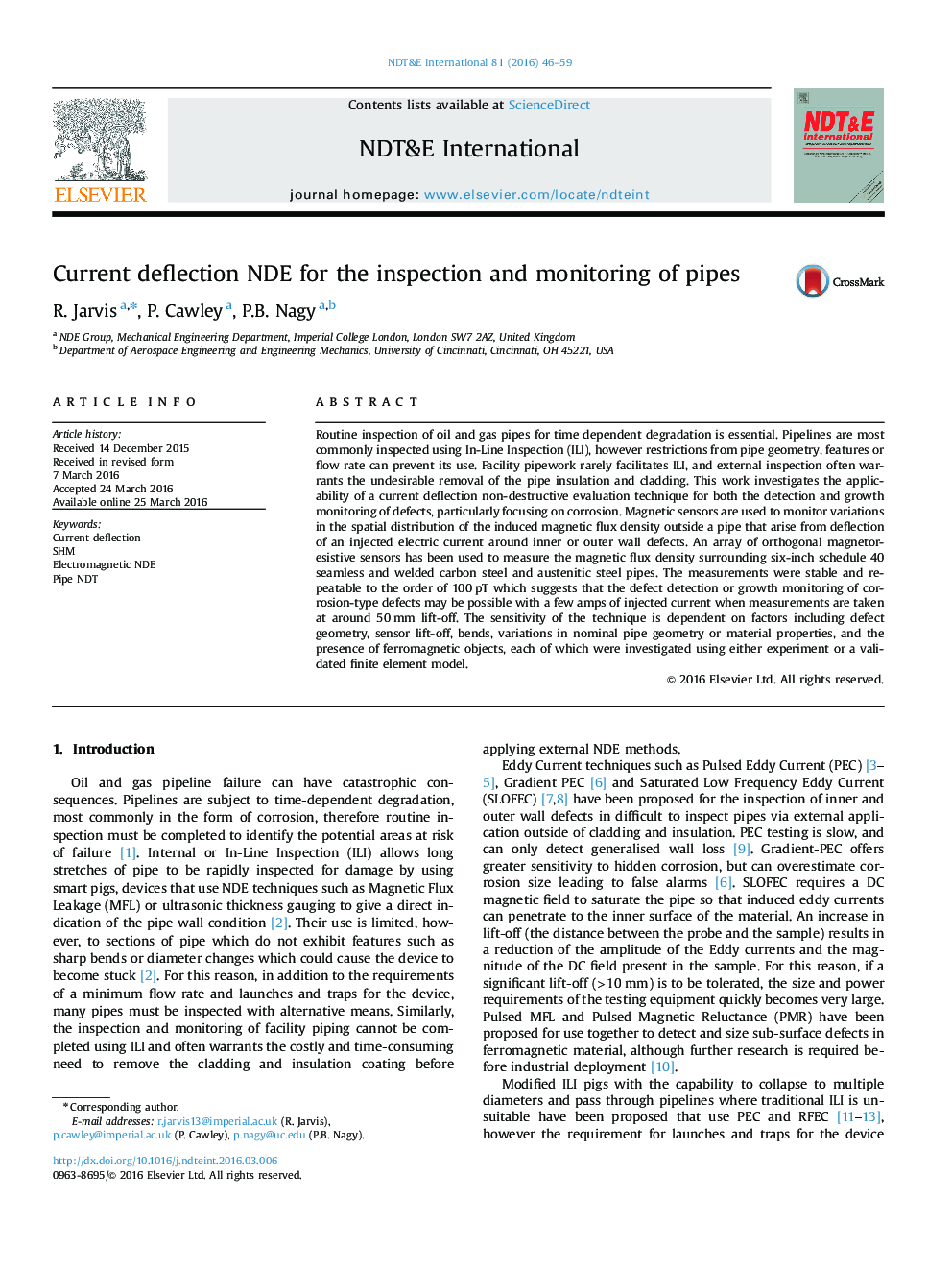| کد مقاله | کد نشریه | سال انتشار | مقاله انگلیسی | نسخه تمام متن |
|---|---|---|---|---|
| 294958 | 511505 | 2016 | 14 صفحه PDF | دانلود رایگان |

• The magnetic signature of current deflection can be measured using inexpensive magnetic sensors.
• With a few Amps of injected current, signals are feasibly detectable tens of mm from the pipe surface.
• A validated finite element model has predicted signals from various defect and pipe geometries.
• The technique could be used for inspection or monitoring of internal or external pipe defects.
Routine inspection of oil and gas pipes for time dependent degradation is essential. Pipelines are most commonly inspected using In-Line Inspection (ILI), however restrictions from pipe geometry, features or flow rate can prevent its use. Facility pipework rarely facilitates ILI, and external inspection often warrants the undesirable removal of the pipe insulation and cladding. This work investigates the applicability of a current deflection non-destructive evaluation technique for both the detection and growth monitoring of defects, particularly focusing on corrosion. Magnetic sensors are used to monitor variations in the spatial distribution of the induced magnetic flux density outside a pipe that arise from deflection of an injected electric current around inner or outer wall defects. An array of orthogonal magnetoresistive sensors has been used to measure the magnetic flux density surrounding six-inch schedule 40 seamless and welded carbon steel and austenitic steel pipes. The measurements were stable and repeatable to the order of 100 pT which suggests that the defect detection or growth monitoring of corrosion-type defects may be possible with a few amps of injected current when measurements are taken at around 50 mm lift-off. The sensitivity of the technique is dependent on factors including defect geometry, sensor lift-off, bends, variations in nominal pipe geometry or material properties, and the presence of ferromagnetic objects, each of which were investigated using either experiment or a validated finite element model.
Journal: NDT & E International - Volume 81, July 2016, Pages 46–59